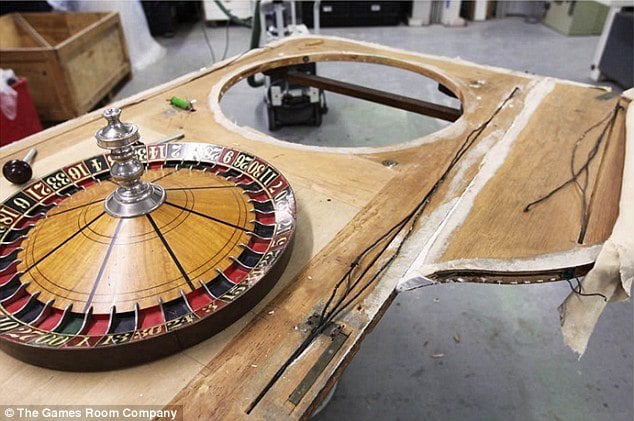Inside the World of Rigged Roulette Wheels

The Secret History of Tampered Casino Devices
Casinos have long faced the threat of cheating, but not all deceptive devices target the house. While some schemes aim to tilt the odds for players, others are crafted by casinos themselves to discreetly ensure the house’s victory. These rigged systems do more than just guarantee a win—they are built with an astonishing level of sophistication to create the illusion of fairness for years.
Hollywood’s Take: The Sting and Real-Life Devices
Many movie fans recall the unforgettable scene from “The Sting,” where a crafty dealer pushes a hidden button under the table, manipulating the roulette ball into a predetermined slot. The character “Hooker” instantly realizes he’s lost to a rigged game, but in the clandestine world of gambling, there’s little recourse. What many don’t know is that devices like these—known as “gaffed wheels”—have truly existed. These were not just limited to shady back rooms, but also surfaced in large-scale gambling operations needing backup plans against high-rolling players.
Electromagnetic Manipulation: How “Juiced” Roulette Tables Worked

Early fraudulent roulette wheels took advantage of “Drop In” constructions, which allowed the wheel to be inserted into a specially prepared table. This design enabled the installation of a hidden ring of electromagnets beneath the wheel. When used in combination with a roulette ball containing a concealed steel core, the system could control where the ball eventually dropped. By activating the magnets at key moments, operators could force the ball to avoid certain numbers, denying players big wins. Known as “juice tables,” these manipulative setups were so expertly built that neither players nor dealers usually suspected any wrongdoing.
A notable anecdote involves a collector who stumbled upon a gaffed wheel purely by accident. Upon dismantling what he believed to be an ordinary wheel, he uncovered old batteries and a coiled wire system—clear evidence of an outdated but once-sophisticated cheating machine. Its craftsmanship was so impeccable that prior owners remained unaware of its true nature.
The Ingenious “Kickoff Wheel”: Mechanical Interference without Power
Some rigged roulette wheels functioned through low-tech means, bypassing the need for batteries or electricity altogether. One such variant, the “kickoff wheel,” worked alongside a “dead ball”—a ball engineered to bounce much less than a regular roulette ball, so it would more easily drop directly into a nearby slot. Hidden holes placed under the ball track’s rim concealed thin wires. At just the right moment, an operator could push a wire out to bump the ball off its track and steer the outcome.

This mechanical trickery allowed casinos to halt a player’s winning streak at critical times, keeping losses minimal and ensuring that the odds remained in the house’s favor.
How the Mechanisms Stayed Hidden
Most casino employees were never directly involved in operating these covert devices. Instead, special staff or managers activated the hidden systems, often at times of high stakes or when a particularly lucky player was on a streak. Original versions of these crooked wheels came with mechanical switches discreetly located on the table legs or base, but technological progress introduced remote controls—some activated with devices as common as a garage door opener.
Successfully running a gaffed table took tactical skill. Operators couldn’t interfere with every spin, as obvious cheating would discourage customers. The manipulation strategy was about subtlety—waiting for the right moment to spoil a big bettor’s streak, rather than arousing suspicion by rigging every round.
In some establishments, these devices became routine, especially in places frequented by newbies or those with no alternative gaming venues. An old gambling joke emphasizes this: when warned by a friend that the local card game is full of cheaters, a gambler responds, “I know. But it’s the only game in town,” and heads right back to play.
Are Roulette Wheels Still Rigged in Today’s Casinos?
Modern gambling venues rarely risk using physically rigged roulette wheels. Heavy, bulky, and easily discoverable, these “gaffed” wheels now pose more trouble than they’re worth. Furthermore, with standard house odds already in their favor, casinos have little need to rely on overt cheating devices.
However, rare cases of contemporary wheel tampering still occur. Sometimes staff may subtly change the materials of the ball, alter the ball track, or even use tools to adjust the pockets to affect outcomes. Stories have emerged of wire frames being placed in certain slots to minimize payouts on over-bet numbers—nearly invisible when the wheel is spinning, yet highly effective in tipping the odds.
While incidents of physical rigging are extremely uncommon in professionally regulated casinos today, the history and technology behind such devices serve as a reminder: wherever there’s gambling, there’s always someone searching for an edge. If given the opportunity—and the right cover—almost any device can make a comeback.









